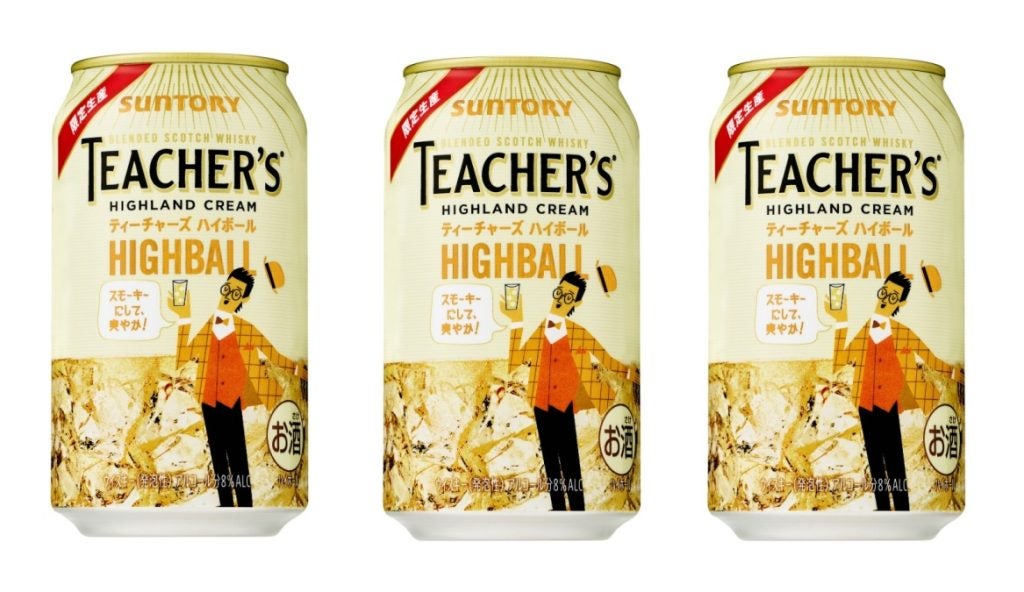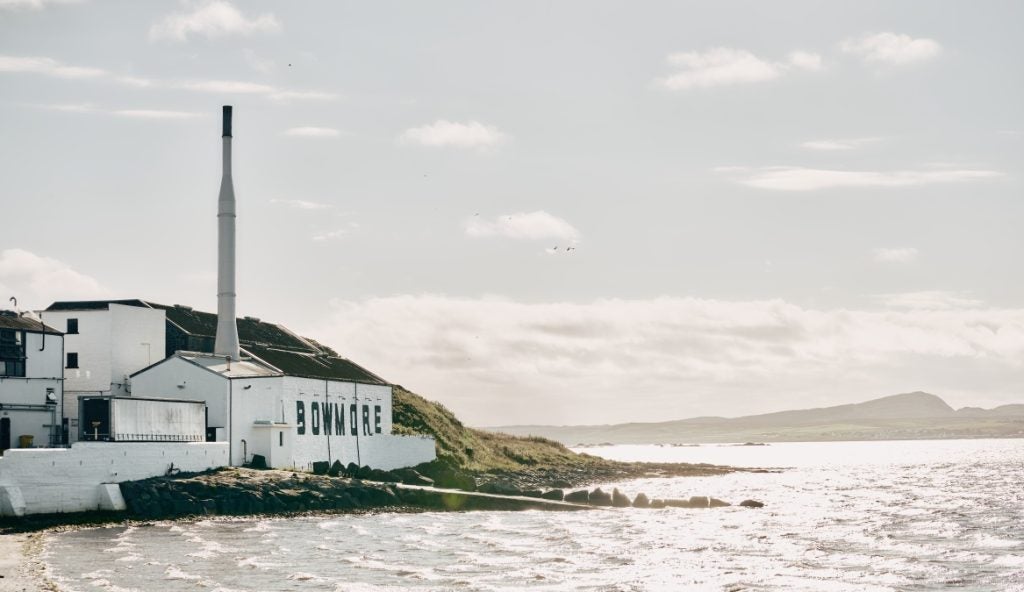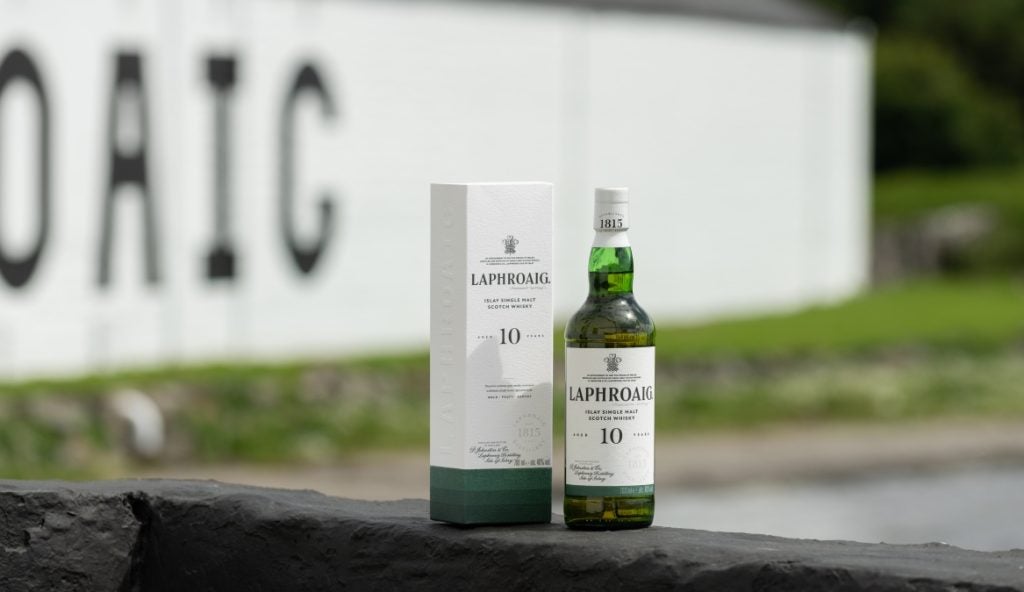Last month, Beam Suntory – the US-headquartered spirits arm of Japanese group Suntory Holdings – was rebranded to Suntory Global Spirits, reflecting what it called a “sharpened focus” on “key” categories and brands.
The group has a raft of projects and investments in progress and Just Drinks caught up with Chris Richardson, VP of global Scotch and Irish brands at Suntory Global Spirits, about the future of its whisk(e)y business in the two regions.
Jessica Broadbent (JB): You’ve just launched an RTD product in Japan with Teacher’s whisky. Tell us more about that?
Chris Richardson (CR): That's our first proper foray into the world of RTDs from our Scotch portfolio. It’s a pure Scotch-and-soda highball, there's no flavourings added in which really heroes the smokey character of Teacher’s whisky. They've already had some great feedback from customers and consumers, so we're quite excited about that.
It outlined American whiskey, Japanese Spirits, Scotch, Tequila and RTDs as its key priorities – though said the change had no structural impact on the business or its day-to-day running.
We're seeing a lot of growth in Japan on Teacher’s. Given our company ownership, Japan is increasingly becoming a very important market for our Scotch portfolio.
JB: Do you think you’ll look to roll the RTD out in other markets?
CR: I think it's an area of interest. Suntory has stated an ambition to really lead the way in RTDs and it is an area of focus for the company in general and across a number of our biggest markets.
I think this is a great opportunity for us to learn a little bit about the world of RTDs for our Scotch portfolio and to understand where there are lessons that we can then apply in other markets, be that with Teacher’s – who knows in terms of our brands, that's not on the agenda at the moment, but we need to also remain aware of what's happening in the market and how consumer trends are changing.
JB: Do you think RTDs are a good way into more traditional whisk(e)y segments like Scotch for younger or new drinkers?
CR: Yeah, I think that's what we've historically seen and certainly some of the early research and evidence coming back from the work in Japan [shows]. They've been launching new RTDs with other brands as well, and what they're telling us is it's helping them to recruit new consumers into the brand [and] into whisk(e)y. It's making it more accessible and that initial experience a little bit easier to get into.

JB: Do you foresee a brand like Laphroaig ever being taken into RTDs?
CR: It’s an interesting question. I don't mind telling you I happen to think Laphroaig is great in cocktails or mixed drinks. Laphroaig has such a bold and distinctive flavour profile that actually when you combine that with complementary flavours, I actually love the additional dimension that adds to a mixed drink.
Laphroaig is great in cocktails or mixed drinks.
Do I think it's totally out the question? No, and I think we have to remain open-minded for the future. We don't currently have any plans to do that just yet. I know the world has very polarised views on these things in terms of whether a single malt should be mixed or not, and whether it should go into cocktails or something like RTDs. Certainly it's not a big part of the category right now but who knows what the future holds?
JB: How are you seeing demand for Scotch and Irish whisk(e)y?
CR: It's an interesting time. The Scotch and Irish whisk(e)y categories have both enjoyed some quite strong growth for the last few years; the post-Covid rebound has fueled a lot of growth and then only really in the last year or so has there been a bit of a slowdown on that.
One of the things we have noticed is a little bit of a de-stocking with some customers, wholesalers, distributors, etc. because of supply-chain challenges that came out of Covid – maybe they were stocking up and then started to destock post-Covid.
From a value point of view, the category is still growing. It's in good health. And again, you know, at the more premium end of the category, we're seeing growth ahead of the category as a whole. Our forecast is for that to continue.
We're still predicting growth for the category in the future, maybe not quite at the same pace that we've enjoyed for the last four or five years but, given the size of the category and its very broad geographic footprint – and I think that's one of the things that helps Scotch in some ways – it's not overly exposed to the dynamics of any one market because it has such a broad geographic footprint, which is quite different to some of the other spirits categories.
Historically, whilst you do see these slight slowdown years, generally speaking, it continues to be a category that has pretty steady growth and we're optimistic about that in the future.
JB: So you think that destocking was inventory normalisation after the pandemic?
CR: Yeah, I think it was one of the dynamics. It’s not the only reason by any means, but one of the dynamics was a little bit of a destocking within markets because of the challenges of the supply chains coming out of the pandemic. It kind of made sense to make sure that you had a bit more stock on hand.
Some of the challenges have started to normalise but, given the economic conditions, cash flow becomes important for people and so having large amounts of high-value stock is not necessarily where you want to be.
Combined with the impact of inflation and interest rates on consumer confidence and spending, that just means a little bit of a slowdown, albeit as I say, still seeing the value of the category moving forward.
JB: Last year, Scotch exports did decrease in both volume and value. Long term that doesn't concern you?
CR: No. Our forecast, and our belief, is that the category will continue as it has done for many years to grow at a steady rate and that it will also continue to premiumise.
That’s why we're investing in the future and really looking at making sure that we're getting the quality of our liquids to continuously improve, investing in making sure that we are distilling as much as we possibly can for the future, but also investing into stuff like warehousing and storage in order to be able to cope with those high volumes in the future.
JB: Are you noticing any trading down within your brands or moving to private label?
CR: It depends a little bit on the market. We're seeing different dynamics in different markets. There are certainly some markets where there has been a little bit of trading down, or perhaps just consumers being a little bit more conscious about what they're buying and making sure that they obviously want to get the best value for the money that they're spending.
JB: Any markets in particular?
CR: Certainly we've seen a little bit of that in North America and probably a little bit in some of the European markets as well. So that's been a dynamic.
However, we're still seeing strong growth in the premium ends of the category as well. We're seeing a lot of growth in Asia, in travel retail, which is a big area for our business in Scotch and Irish.
We're just looking at making sure that we've got the right products available in the right markets to meet the different consumer needs that are evolving over time. Again, as we look to the future, I'm confident that the market will be stable and will have good growth.
JB: As a group, how do you stop other whisk(e)y categories cannibalising Scotch and Irish sales?
CR: As a company, we have quite an enviable portfolio of Bourbon and Japanese-whisk(e)y brands that we're very proud of and they're very important to our business. I've worked for Suntory for eight years, I've worked across the portfolio… So for me, I don't see them as competitors.
What I would say though, is Scotch is the category that has opened up the whisk(e)y opportunity around the world and it's been able to lead the way. Many of these distilleries that we're seeing in Japan, the US and other parts of the world are taking their lead from the world of Scotch – the practices and the production methods of the Scotch world. And that's very much the heart of the Suntory story – Shinjiro Torii coming to Scotland and learning the practices and exporting them back to Japan.
I think we can be very proud of the work that the Scotch industry has done in opening that up. But, equally, I think what's important is that from a Scotch point of view, we continue to ensure that we are producing products of great quality, that are meeting the needs of consumers. That's how we can continue to make sure Scotch stays at the forefront of the whisky industry as a whole and that's where our focus is from our Suntory Scotch portfolio.
JB: How significant in terms of volume and value sales are Scotch and Irish within the portfolio?
CR: Around 10%, I don't have the exact numbers – what I can say is we have a number-one position in Bourbon as a company, we have a number-one position within Japanese whisky. From a volume and value metric point of view, our Scotch portfolio isn't as big as some of the leading global players but we do have strong positions with the brands and the areas that we play within.

Laphroaig gets number-one Islay single malt, Bowmore is the original Islay single malt and is increasingly becoming an important brand within that prestige space.
For us, it's about ensuring that where we do play with our Scotch portfolio we're able to contribute in a meaningful way both from a category but also from a portfolio point of view.
JB: What comes next for Laphroaig with your expansion plans at the distillery?
CR: Laphroaig’s not had big investment at the distillery for a long time. I think it's 100 years. The plans that we have relate to capacity but they also relate to quality – some of the initiatives that we're putting in place to ensure the best possible quality in the future – and also to the visitor experience.
We've already been talking to the community and local councilors on the island. So this conversation has already been in the public for a little while.
That's it at the moment. It's just an application for planning permission, so there's not really much more to say but it's a brand that we've got a lot of belief in in terms of its potential for the future and I personally see as one of the icons of the category.
JB: Is that peated style growing in popularity?
CR: Yeah, we are seeing peated or smokey styles of whiskies growing in popularity around the world. The level of that development is different in different markets. Typically, it maybe is a little bit less prevalent in Asia where more sherry-forward, Speyside-style whiskies tend to be a little bit more searched for.
JB: This could be a whole interview on its own but what work is Suntory doing in terms of sustainability around peat?
CR: One of the pillars of Suntory’s ‘proof-positive’ commitment is nature-positive and Suntory has a fundamental belief in the importance of looking after our environment because this where our whisk(e)y comes from. The water and the land and all those kind of things are integral to the production and character of our whiskies.

We've invested in and we are part of an initiative specifically around peatland restoration. We are investing more than $4m in the conservation and restoration of peatlands and natural watersheds across Scotland.
Our ambition is to restore more than twice the peat that we are using by 2040.
JB: Do you think that the whiskey industry as a whole should simply be reducing the amount of peat used?
There isn't an easy replacement for peat.
CR: I think what the whisky industry has a responsibility to do is to ensure that our practices are sustainable, or as sustainable as possible.
That's why I think initiatives like the peatland restoration work that we're doing are so important because then what we're doing is actually protecting those resources and even having a positive impact on the environment in the future.
There isn't an easy replacement for peat itself as an ingredient and obviously for those distilleries where that's a big part of the character, that's an important part of what they do. But our focus is on trying to make sure that we are doing that in a sustainable way.
JB: You’ve mentioned lots of investments within your Scotch portfolio, have you got any plans for the Irish distilleries?
CR: From a quality point of view, there's work happening in our Irish-whiskey business, just as there has been in our Scotch business, and we have trials happening all the time on improvements to that area.
We don't have any plans in terms of capacity from an Irish-distillery point of view right now.
What I would say about Irish whiskey is it's a category that has grown significantly over the last ten to 15 years or so as a number of distilleries have been set up and started distilling.
I think Jameson has done a great way in paving that path for the category as a whole but actually now it's becoming more and more diverse, with lots of very interesting distilleries and whiskies starting to emerge in the market.
I think we'll see that continue as consumers start to explore the different styles of Irish whiskey.
Connemara, for example, is a lightly peated single-malt Irish whiskey which right now would be a very small segment, but actually, I think is a very interesting area. It’s the type of thing that consumers will start to explore.
We actually see quite a lot of potential in that area of premium Irish whiskey. Certainly that's a space that will we'll be looking to develop in the future.
JB: Are there any particular countries where you see potential for Irish whiskey?
CR: Right now the US is by far the biggest market for Irish whiskey but we actually we see a lot of potential in Europe because of the maturity of the whisk(e)y categories. Actually, consumer choice is quite diverse across different styles. We see quite a lot of opportunity, particularly for a brand like Connemara, for example, in markets like France, Germany and the UK.
France and the UK are particularly interesting for us because we already have an own route to market in Germany but we're setting up an own route to market in France. We've just set up a new route to market in France in January and we will be launching a new owned route to market in the UK from February of 2025.

So the fact that we will be also managing and distributing our own brands within those markets means that we're able to start developing some areas in the portfolio that maybe in the past we weren't able to do and so I'm certainly seeing those as markets of great potential for the Irish business.
JB: Is that something as a company you're looking to do more of, to take more control of your supply chain?
CR: Correct, yes. Part of our strategy for the future is to have, for our key global markets, particularly those markets where there's key cities, to have control of our route to market for our brands.
Obviously we've seen that manifest through the new route to market in France, the UK, the One Suntory route to market that's also being set up in Oceania at the moment in Australia and New Zealand. Whilst I'm not privy to the plans of you know, where else [the company will set up], I think that would be a plan for the future.
Equally there are still markets where we have very strong distributor relationships and where those distributors are doing a great job developing our brands, so it's doesn't mean that we need to do everywhere but obviously for some markets it makes sense.









